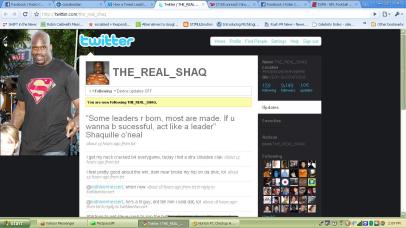Will the real publicists and PR practitioners please stand up?
This past week I was asked a question that stumped me: What don’t you like about your job? I’m not generally asked that question. I do, however, always discuss with a close colleague the things I don’t like about being a PR practitioner and publicist (you know those are two different professions, right?).
My answer:
- The “hurry up and wait” aspect of pitching stories and waiting for bites from editors, producers and journalists
- The fact that I often have to explain, justify and instruct on what I do as I do what I do to people who pay me but who really don’t know much about publicity and PR
- The rejection. I don’t like it when an editor, journalist or producer passes on my pitches for my clients; I take it personally and it sucks
I need a drum roll here.
There is something else that bugs the living daylights out of me and that would be the scores of people who have watched reality TV one time too many and truly believe that the life of a publicist and PR practitioner is glamorous and easy. They think it is so glamorous and easy, I believe they literally wake up one day and decide, “That’s it. I’m going to be a publicist!” and then they buy the business cards (passe) and stationery, and get a Web site. Those folks are the bane of my existence and an insult to the profession. And they make me wish I’d become a brain surgeon for all of the studen loan debt I’ve incurred.
BAM!
Essentially, they just play a publicist on TV. No passion. No studying. No background or previous experience of worth. No aptitude. Nothing.
Look, I’m not a hater, but I don’t like ineptitude of any kind – in any profession. But I hate illusions more and that’s because those of us who were born to do it and who slave to do what we love — have to clean up the messes of those who only play a publicist on TV.
Such is my rant.
But here’s another example that probably makes more sense and is easier to digest. Some years ago, I met Kevin, a nice guy who dated a friend. Kevin’s dad was a physician at a local hospital. Now you would think Kevin had had conversations with his father about the man’s career path, maybe even his schooling. Nope. Kevin thought by applying for a job as an orderly at the hospital, he could be like his dad and work his way up to a doctor’s job. I asked him if he thought about college and then medical school and he told me no. And to suggest that most physicians go through undergraduate school and then medical school, an internship and residency was lost on deaf ears. Enough said.
I love my colleagues who make PR and publicity look easy. That’s a gift. However, I don’t like the “colleagues” who think PR and publicity are so easy, you can wake up one morning and just be a publicist or PR practitioner without knowing anything about the profession(s).
There have been tons of times when I’ve said something to one of the publicists/practitioners who only play one on TV, and they’ve looked totally lost. I asked a colleague, ‘Is it me? Or, is this person perpetrating?’ She said, “Perpetrating.” So to assist me with this blog post I called my colleague to come up with some legitimate ways to discern a real publicist/PR practitioner from one who only plays one on TV.
- Publicists/practitioners speak a special language. It’s the language of our trades and we speak it without thinking and to anyone, like everyone understands. We can’t help it.
- The good publicists are secure and share about their clients, share resources and contacts with other publicists. They are not tight-lipped.
- A real/good publicist never has to buy her/his placements, they know how to pitch. Bad ones sell their clients based on their email distribution lists and call it guaranteed publicity. They will prey on people who don’t know anything about publicity. They don’t know how to write a press release or get real interviews. Can’t put together a press kit, but can buy an ad. They are really promoters not publicists.
- If they don’t know the difference between PR and publicity, then there’s a good chance they are only playing a publicist or practitioner on TV.
Best, Robin
Filed under: African Americans, PR Standards & Practices, Public Relations, The Business of PR & Publicity, Uncategorized, PR, Professional Training, publicity, Standards & Practices


